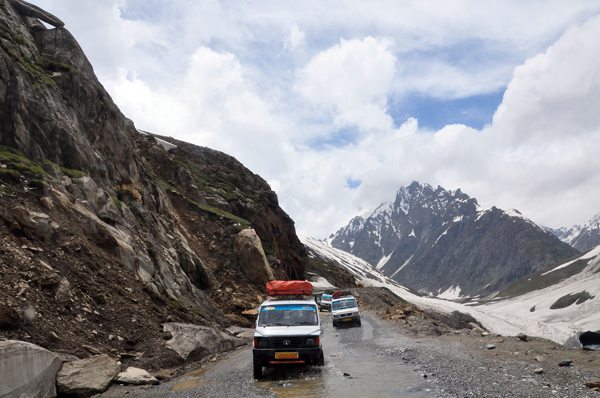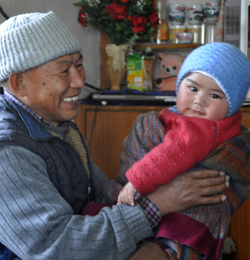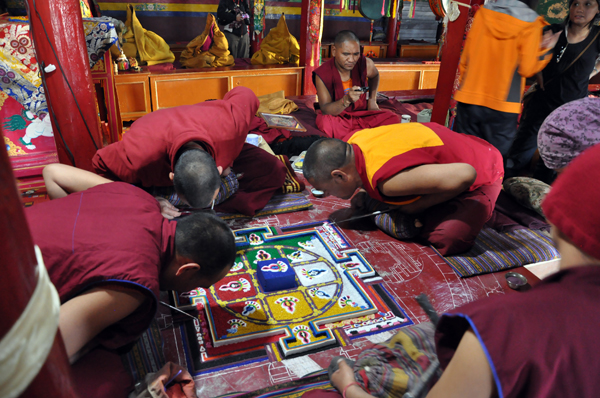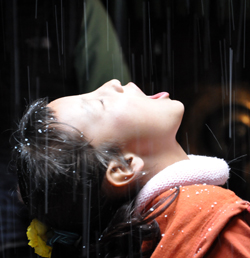LEH, INDIA - After a sleepless night on a bus from the honeymoon hill station of Manali, I was looking forward to reaching Leh — fast.
As my family and friends huddled by the back of the bus to catch backpacks tossed from the rooftop like sacks of rice, a group of screaming 4x4 drivers descended on us.
“Do you need a ride, Madam?” piped one driver.“Come with me, I give good price,” shouted another.The swarm circled us, but a young, blue-eyed Kashmiri, dressed in his best clubbing attire, elbowed his way through and tugged at my bag, leading me towards his vehicle for inspection.
“Tata Scorpio, very nice,” he said, revving up his car while promising with his hand on his chest as if making a Boy Scout pledge, “If we not there (Leh) by 5 p.m., you have discount.”
That’s how we began our four-day, hand-on-horn journey through the Kashmir Valley from Jammu to Srinigar, Kargil and, finally, Leh.We sped to Srinigar to the beat of fist-pumping club anthems of the ’80s and ’90s. Madonna’s Like a Virgin blasted out the windows as we passed sky-high mountain peaks frosted by melting glaciers and nomads galloping by with herds of goats, horses and yaks grazing on the lush Kashmir valley.
This was the long way to India’s secluded Himalayan Shangri-La dubbed “Little Tibet” because its dozens of monasteries lining the mountain range give it a striking resemblance to the Tibetan capital, Lhasa.
The road to Leh is only open two months of the year; three, if there’s no snow blocking the route.

Above: You must travel over rugged terrain to reach Leh.
There are only two ways to reach Leh by road: the quickest route is from Manali, an 18-hour drive best done by jeep or motorcycle so the Himalayan landscape marinates in your memory.
There is a direct flight from Delhi, but that doesn’t let you get acclimatized to altitudes reaching 13,500 feet.
The other land route is through Kashmir and, after waiting for a week in Manali because the roads were still blocked by snow — even in June — that’s the one we had to take.
When we got to Srinagar, the capital was in lockdown. Indian Prime Minister Manmohan Singh was in town and the locals weren’t happy. Communications were shut off, shops were closed, curfews were imposed and the sight of protesters looking for a fight with bricks and machetes was not comforting.
Srinigar — the home to beautiful Dal Lake, lined with wooden houseboats and gondolas — was deserted. Flipping nervously through my guide book for a hotel, I skimmed pass the words “in 2000, Bill Clinton deemed Kashmir the most dangerous place in the world.”
Though Jammu and Kashmir is no more dangerous than anywhere else in India, stability can easily be rocked by a contentious arrest, speech or, in this case, a politician’s visit. Advice: read the papers before travelling.
We left the next morning.
The Pir Panjal mountains followed us for the morning drive to Kargil — a military zone near the Line of Control bordering Pakistan.
Constant checkpoints meant numerous passport inspections. We passed Drass, the second-coldest inhabited place on Earth (next to Oymyakon, Siberia, and it really looked the part).But the jaw-dropping view was like the Grand Canyon — an endless mountain road with the Indus River below — a pious, blue stream that crosses through China, India and Pakistan.It was picture-snapping bliss.
Sharing the single-lane road with horse-riding locals felt like we were passing through an untouched part of the world shielded from modernity. But the flip of a cell phone by a nomad or monk yanked me back to reality.We passed many Royal Enfield enthusiasts living out their Motorcycle Diaries fantasies like Che Guevara.
Tibetan prayer flags led us to our first monastery, Lamayuru, 125 kilometres from Leh. The multi-tiered 10th-century complex of whitewashed clay walls and brown trimming sits on a steep cliff. It makes you wonder how it got there, standing alone surrounded by nothing but Himalayan rock and dust.
According to legend, Lamayuru was once the bottom of a deep lake which was drained away after a Buddhist saint prayed to its guardian spirits.
At last we reached Leh, greeted by a spirited salutation of Jule! (pronounced joo-lay) along with warm chai and biscuits from our guesthouse matron, Amo Lamo.
Living with her family — husband, daughter, son-in-law and 5-month-old grandson — gave us a rare insight into a culture deeply rooted in Buddhism.



Left: A grandfather proudly shows off his grandchild. Middle: A group of monks take time to play a game. Right: The people of Leh are friendly and fascinating.
Each morning we awoke to the sound of her husband’s chants and the smell of burning incense. Meals were prepared with home-grown produce from the garden and punctuated by endearing and hilarious outbursts from Amo Lamo, whose high-pitched voice shouted “bon appétit” or demanded a “bisous” (kiss) from the children of French guests.
Our sojourn in Leh was spent taking daily treks to remote monasteries in the Ladhaki mountains. While it’s true that altitude sickness, food poisoning and getting lost was all part of the experience, good karma prevailed and it always seemed that someone would pop up at the right time to help us find our way.
Everything happens for a reason and the long way to Leh was not about the destination, but the journey.